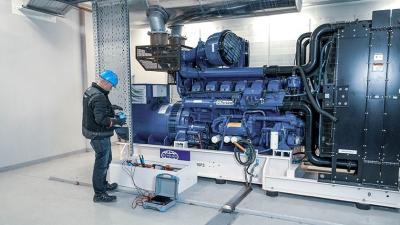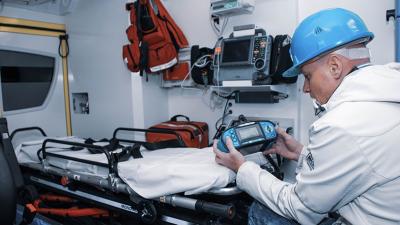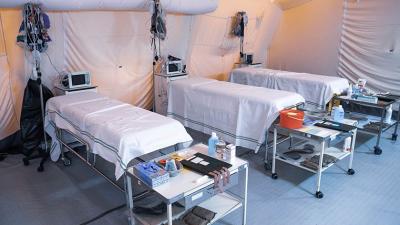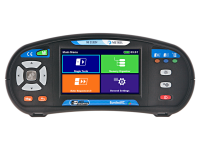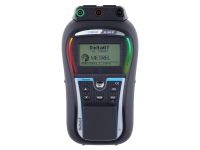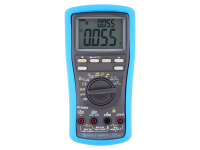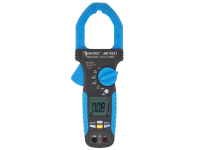Secondary power sources in healthcare
Medical Facilities
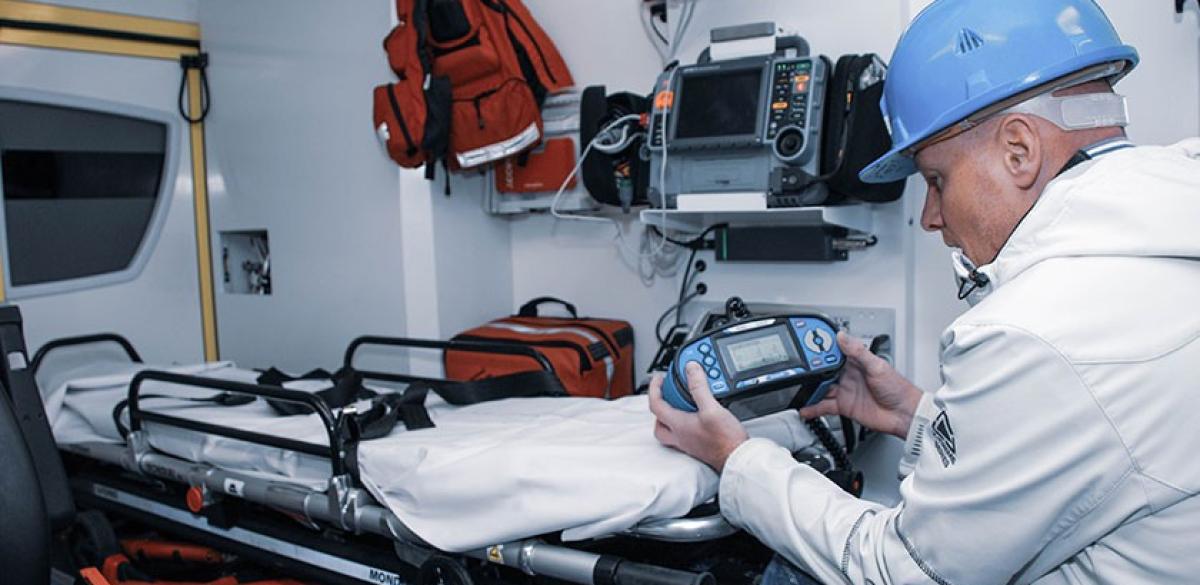
Hospitals are not only immovable buildings, but can develop wherever they are required: from locations of serious car accident to theatres of war. Most such sites have similar issues. Equipment is brought in from a distance and a fundamental infrastructure must be established, starting with power supply and adequate protection for field instruments. Outdoor situations can be considered essentially both wet and dusty.
The materials are intensely stressed in these conditions and have to be chosen specifically for the job. Most temporary installations are going to work isolated from earth. It is sometimes possible to create an earth connection at the site, but in dry weather, the earth can have high resistance. On the other hand, in wet weather, moisture can lower insulation resistance. Devices are adapted to use on the road, but harsh conditions can lower their life expectancy. Safety for a mobile system has to be established depending on possibility of earth connection as IT or TT.
Safety in the field units depends on their power supply. If the installation is very short-term, it might work with battery power, which usually uses low voltage and is intrinsically safer. Even in slightly longer-term field work, small devices may remain battery-operated.
However, some devices used need natively higher supply voltages, which are impractical to power with batteries. High-power inverters are necessary, and the batteries get impractically large and heavy. The other solution is mobile generators. In terms of safety, they are similar to the fixed-installed type, but smaller, lower power, and more prone to overheating. They have to come with a mobile switching board or equivalent device included, with portable RCDs and protection from transient effects when adding and removing consumers.
If multiple generators are in use, full galvanic separation between circuits they supply has to be guaranteed.
Ambulances are scaled down field hospitals. Every instrument has to be scaled to be portable and low-powered while maintaining as much functionality as possible. The installation is isolated and depends on the generator and battery power. Particularly the vehicles adapted from standard vans have been found to not conform to safety in these requirements, only to functionality. Regardless of their origin, all the vehicles should routinely be tested after every deployment. The predominant safety tests are similar to a fixed IT system: mainly insulation and leakage. Handheld PAT and IT tester should be part of the equipment on board.
Application Notes
Competencies at edison
EDISON is an international organisation for certification of competences in electrical safety testing. Click on the links for more information on each competency.
- MEDi: Medical and Surgery Rooms Electrical Installations Safety
- MEDe: Medical Electrical Equipment Safety
- EISinsp: Low Voltage Electrical Installation Safety for Inspectors
- eMOB: Electrical LV Installations in Mobile Units Safety
- IEC / HD 60364-6 Low Voltage Electrical Installation Safety: Part 6 Verification
- IEC / EN HD 60364-7-710 Low-voltage electrical installations – Part 7-710: Requirements for special installations or locations – Medical Location
- IEC EN 61557 – 8 Insulation monitoring devices for IT systems
- IEC / EN 62353 Medical Electrical Equipment – Recurrent test and test after repair of medical electrical equipment
- IEC / EN / HD 60364-7-717 Low-voltage electrical installations – Part 7-717: Requirements for special installations or locations – Mobile or transportable units
